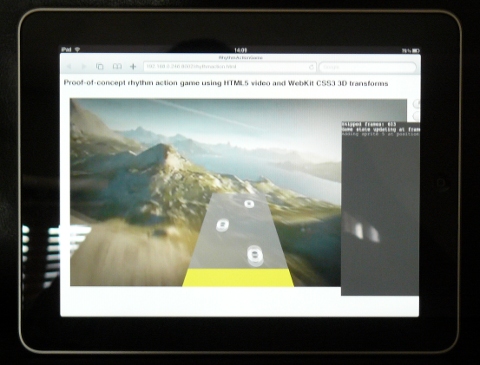Enhanced version of Python's SimpleHTTPServer that supports HTTP Range
I've just uploaded a small personal project to GitHub here. It's basically a very crude webserver that allows me to share audio files on my Linux boxes to my iOS devices, using Mobile Safari.
The main reason for noting this is that the code may be of more general interest because it implements an improved version of Python stdlib's SimpleHTTPServer module, that implements basic support for the Range header in HTTP requests, which is necessary for Mobile Safari on some MP3 files.
During early development, I found that some MP3 files would refuse to play in Mobile Safari when served by SimpleHTTPServer. The same file would play fine if served by Apache. Because debugging mobile web browsers is a PITA (caveat: I've haven't kept up with the latest-and-greatest in this area), I ended up resorting to Wireshark to see what was going on.
Wireshark indicated that Mobile Safari would request chunks of the MP3 file (initially just the first couple of bytes), but SimpleHTTPServer would always serve the entire file, because it never checked for the existence of the Range header. On certain files, this wouldn't bother Mobile Safari, but on others it would cause the audio player widget to show an unhelpful generic error.
Once I understood what the problem was, I found that I'm not the first person to get caught out by this, and that Apple themselves state that servers need to support Range to keep Mobile Safari happy.
To solve the problem, I wrote a new class HTTPRangeRequestHandler that is a direct replacement for SimpleHTTPServer. In my app code proper, I then (try to) pull in my enhanced handler as follows:
try:
import HTTPRangeServer
inherited_server = HTTPRangeServer.HTTPRangeRequestHandler
except ImportError:
logging.warning("Unable to import HTTPRangeServer, using stdlib's " +
"SimpleHTTPServer")
import SimpleHTTPServer
inherited_server = SimpleHTTPServer.SimpleHTTPRequestHandler
...
class MySpecificHandler(inherited_server):
...
def main(port=12345):
Handler = EnhancedRequestHandler
httpd = SocketServer.TCPServer(("", port), Handler)
Arguably it might be better for the code to die if HTTPRangeServer cannot be imported, but as the stdlib SimpleHTTPServer is good enough for many browser clients, it doesn't seem too unreasonable to use it as a fallback.
This code is currently OK for most uses, but currently it doesn't support all variations of the Range header as described at aforementioned W3C spec page. It does however support all the requests variants I've seen in my - admittedly very cursory - browser testing, and any requests that it can't parse will instead get the full file served, which is the same behaviour as SimpleHTTPServer.
The musicsharer application that's built on this class is even rougher, but as it's really just intended for my own personal use, you shouldn't hold your breath waiting for me to tart it up...



















